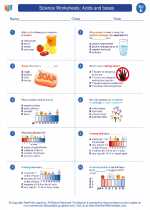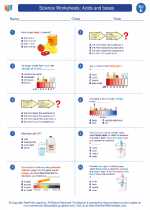Carboniferous Period
The Carboniferous period, which lasted from about 359 to 299 million years ago, is an important time in Earth's history. It is known for the widespread development of forests and the eventual formation of coal deposits, hence the name "Carboniferous," which means "coal-bearing."
Key Points to Remember
- The Carboniferous period is divided into two parts: the Mississippian and the Pennsylvanian.
- During the Carboniferous period, Earth's landmasses were joined together in the supercontinent Pangaea.
- The climate during this time was warm and humid, leading to the growth of vast swampy forests.
- These forests were dominated by giant ferns, club mosses, and horsetails, which eventually formed the coal deposits we use today.
- The high oxygen levels during the Carboniferous period allowed for the evolution of large insects, such as dragonflies with wingspans of up to 30 inches.
- Early amphibians and reptiles also began to diversify and inhabit the land during this time.
Study Guide Questions
- What is the meaning of the term "Carboniferous"?
- What were the two parts into which the Carboniferous period is divided?
- Describe the climate during the Carboniferous period and its impact on plant life.
- What types of plants dominated the forests of the Carboniferous period, and what did they eventually form?
- How did the high oxygen levels during the Carboniferous period impact the evolution of insects?
- What types of animals began to diversify and inhabit the land during the Carboniferous period?
Further Study
To further explore the Carboniferous period, consider researching the following topics:
- Geographical changes and the formation of Pangaea
- The process of coal formation
- The evolution of early amphibians and reptiles
- The impact of the Carboniferous period on Earth's atmosphere and climate
Studying the Carboniferous period can provide valuable insights into the history of life on Earth and the geological processes that have shaped our planet. Have fun exploring this fascinating time in Earth's history!
.◂Science Worksheets and Study Guides Fifth Grade. Science Worksheets: Acids and bases
Study Guide Acids and bases
Acids and bases  Activity Lesson
Activity Lesson Acids and Bases
Acids and Bases  Worksheet/Answer key
Worksheet/Answer key Acids and bases
Acids and bases  Worksheet/Answer key
Worksheet/Answer key Acids and bases
Acids and bases  Worksheet/Answer key
Worksheet/Answer key Acids and bases
Acids and bases  Worksheet/Answer key
Worksheet/Answer key Acids and bases
Acids and bases  Vocabulary/Answer key
Vocabulary/Answer key Acids and bases
Acids and bases  Vocabulary/Answer key
Vocabulary/Answer key Science Worksheets: Acids and bases
Science Worksheets: Acids and bases 

 Activity Lesson
Activity Lesson
 Worksheet/Answer key
Worksheet/Answer key
 Worksheet/Answer key
Worksheet/Answer key
 Worksheet/Answer key
Worksheet/Answer key
 Worksheet/Answer key
Worksheet/Answer key
 Vocabulary/Answer key
Vocabulary/Answer key
 Vocabulary/Answer key
Vocabulary/Answer key

The resources above cover the following skills:
PHYSICAL SCIENCE
Matter and Its Interactions
Students who demonstrate understanding can:
Make observations and measurements to identify materials based on their properties.